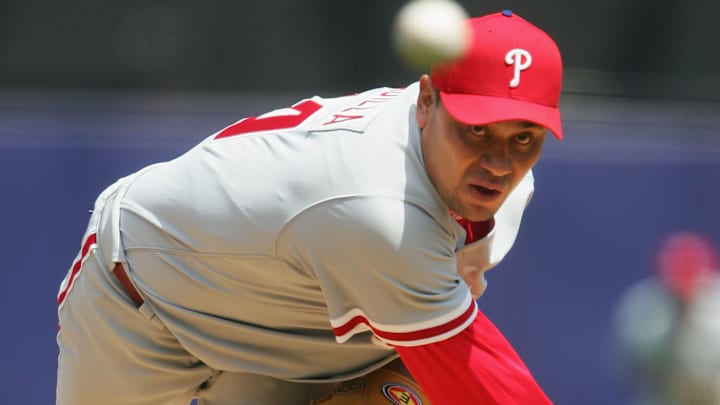Vicente Padilla
It is perhaps somewhat unfair to include Vicente Padilla in this discussion, given that he enjoyed a long and somewhat productive career, and he easily turned out to be the best piece of the underwhelming haul that the Phillies received when they traded Curt Schilling to Arizona in 2000 (sorry, Omar Daal just didn't move the needle). Padilla started his Phillies career as a reliever and the oldest-looking 22-year old you've ever seen, one day after the team traded for him. From there, Padilla held much the same role for part of 2001, but he spent time in AAA being stretched out as a starter. When the 2002 season rolled around, it was time to put the experiment into motion.
And it worked! Padilla had a very nice campaign, going 14-11 with a 3.28 ERA, and he even got an all-star nod. He was nearly as good in 2003, too. But just when it looked like Padilla could be a big part of a formidable rotation in 2004 alongside the likes of Kevin Millwood and Randy Wolf, he started to deal with injuries and just stopped being effective. A 4.53 ERA in 2004 was followed by a 4.71 mark in 2005, and his ticket out of town was punched that offseason in a trade with Texas for the tried and true "player to be named later".
After a few seasons of mixed results with the Rangers, Padilla wrapped up his career with stints with the Dodgers and Red Sox, making him a half-decent answer if you play Immaculate Grid. Padilla ended his career with a respectable 108 wins and a meh 4.32 ERA overall. It was a far cry from the early promise that he showed, as he was unable to fill the gap that existed at the top of the Phillies' rotation during the time period between Curt Schilling and Cole Hamels.
